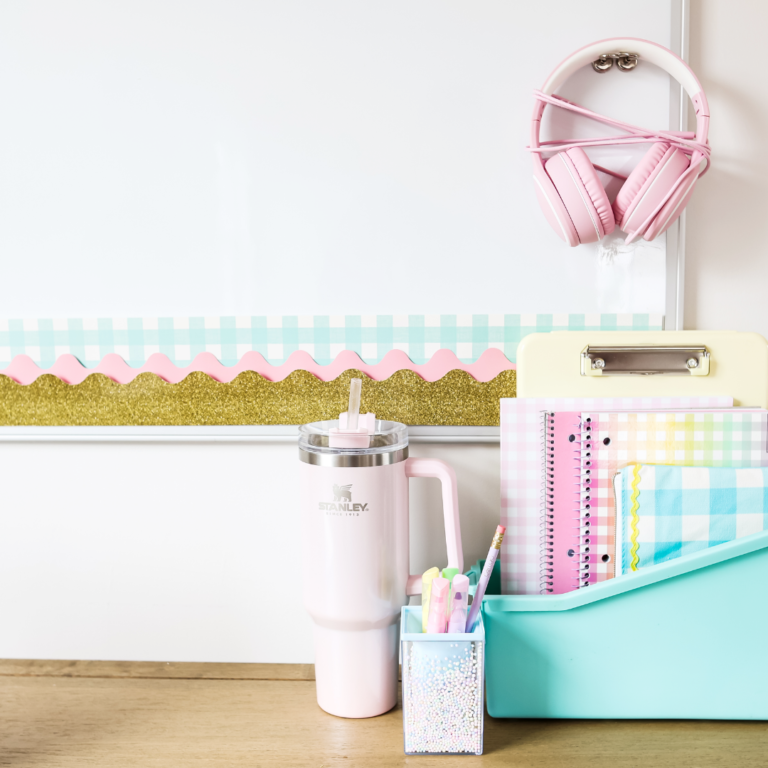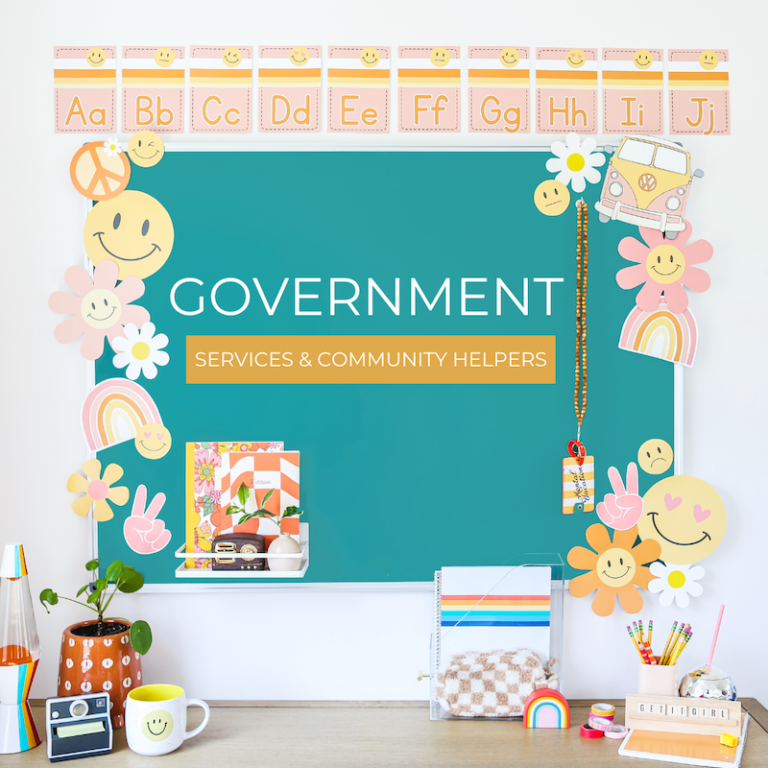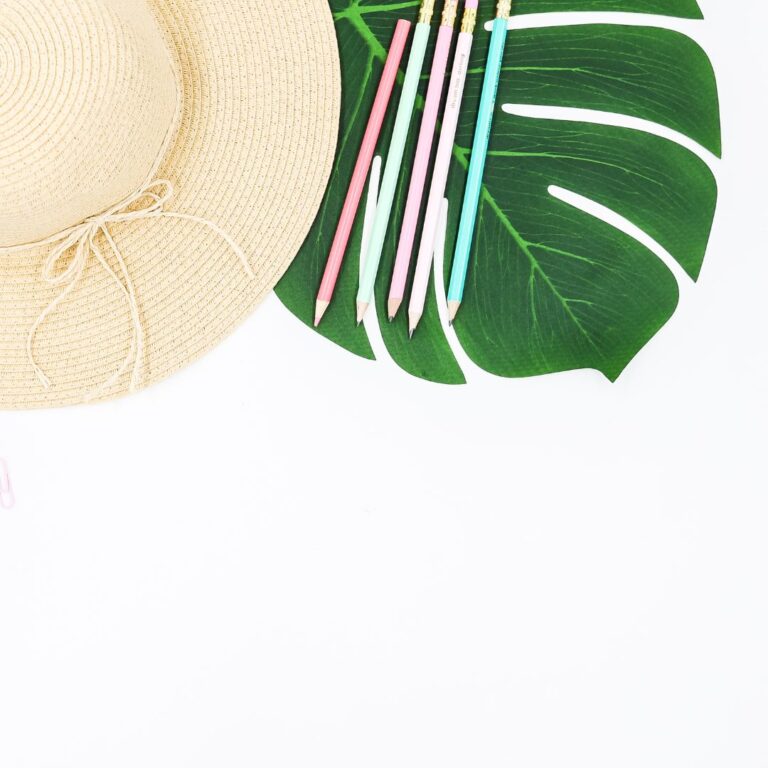Light Energy Lessons: Science Activities for 2nd Graders
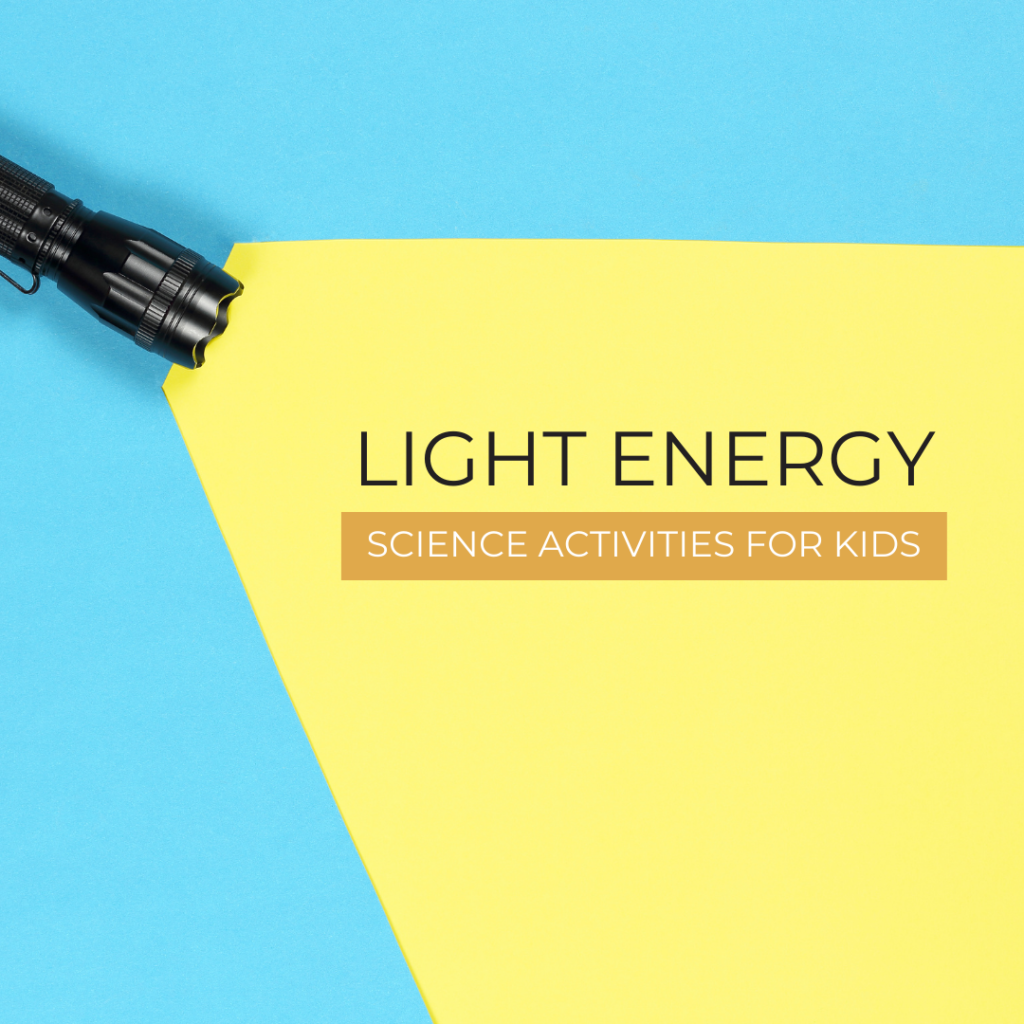
Topics to Cover: Light Energy Lessons
Teaching a unit on forms of energy and light can feel overwhelming, but it doesn’t have to be. There are a few major topics that I like to introduce and cover when making my second grade light energy lessons.
Students need to be aware that light is a form of energy. Since students also need to understand the concept of energy, I would make sure to review this first. I also like to cover how light travels, objects that light travels through, and how shadows are created!

FREE Forms of Energy Anchor Charts
Before you get reading, grab some free anchor chart templates to help you teach your class about sound, light, and heat energy! These are especially great additions to plan for your light energy lessons.
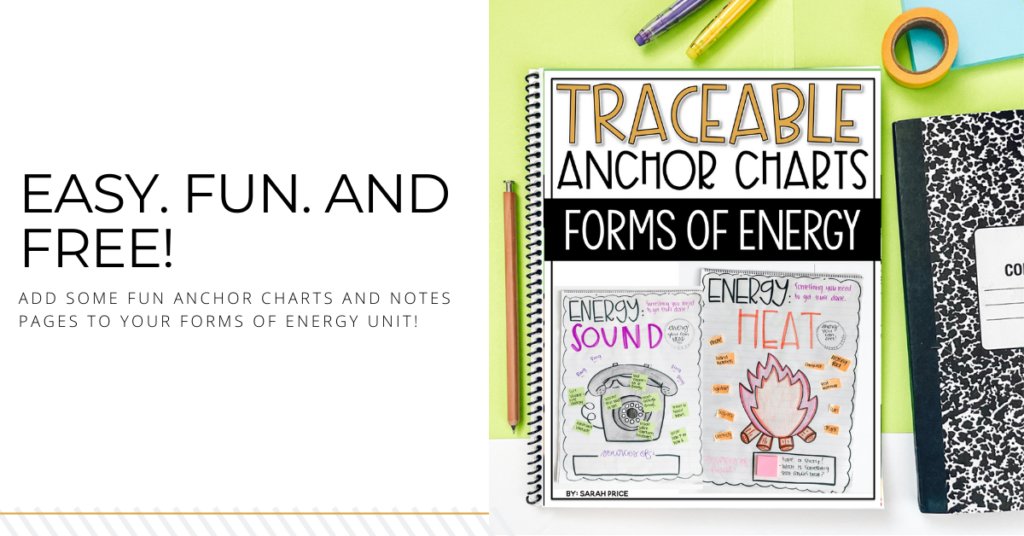
Light Energy Lessons for Second Grade: Experiments
One of the best ways to teach students about a new topic is through a fun hands-on experiment. So, here are 4 activities that I like to add to my light energy lessons. BONUS, my class loves to do these low-prep experiments each year, and they always show a better understanding of light energy afterward.
1. Investigate Natural vs. Artificial Sources of Light
This can sometimes be tricky for second graders, but we discuss the differences between natural light sources vs. man-made light sources.
A particularly fun way to have your class study natural and artificial light sources is by taking your class on a light scavenger hunt. Have your students investigate and find different sources of light during the scavenger hunt that they see around the school or their home.
2. Investigate How Light Travels

The next experiment I like my students to do is investigate how light travels. In this experiment, your students will learn that light shoots out of its source in a straight line called a light ray. The best part, this is a very easy experiment to recreate, since you probably already have all of the materials!
What you will need:
- 3 index cards
- Hole puncher
- Small balls of modeling clay or sticky tack
- Flashlight
Getting Started:
- Take the 3 index cards and poke a hole in the center of each card. (be sure that they are all in the same place.
- Next, take the clay or tape and place the cards so that they are standing up.
- Make sure that the cards are standing at an equal distance from each other. Be sure to place them where the holes line up.
- Then, turn off the lights and turn on your flashlight.
- Shine your light on the cards.
- Place the cards so that the light shines through all three holes.
- Lastly, move one of the cards at the end to show how the light stops and does not bend around the cards.
3. Investigate Mediums Light Travels Through
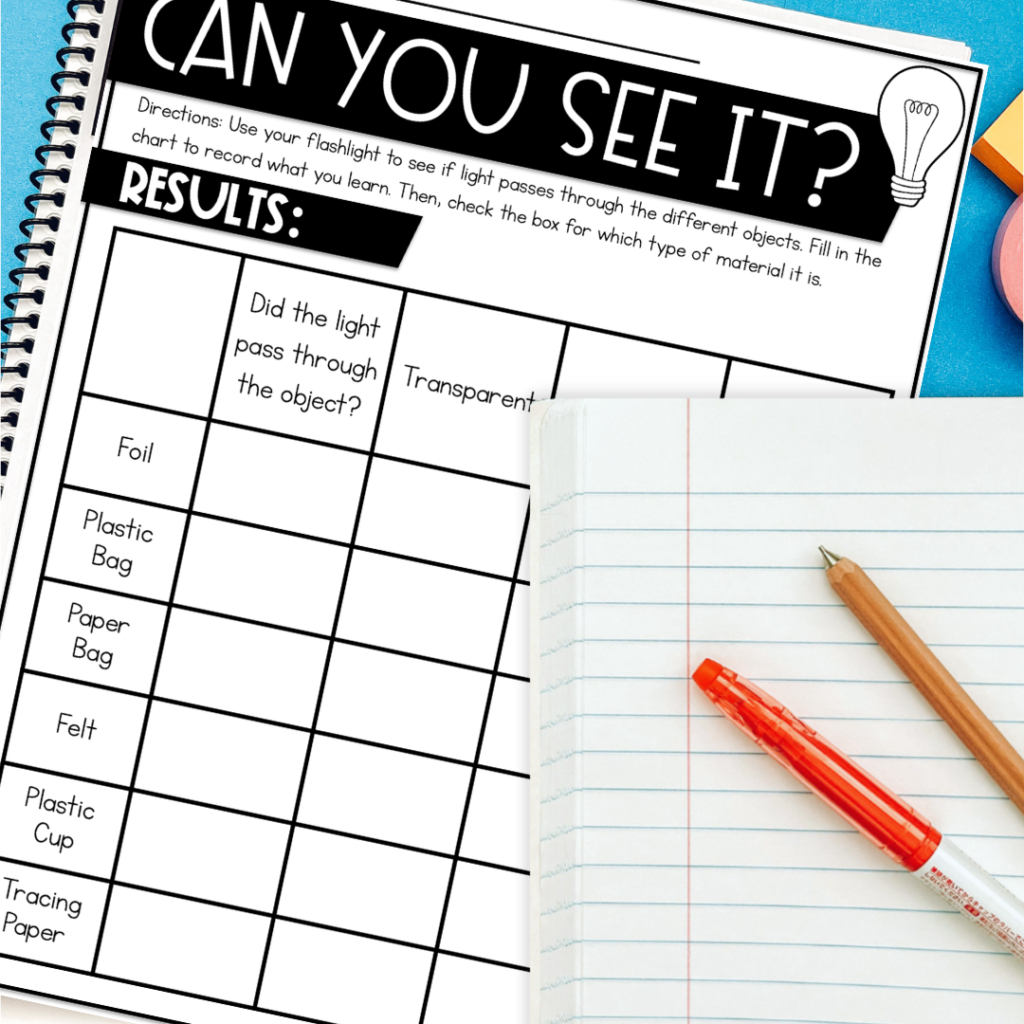
Next, I have students investigate what objects light can travel through. In this experiment, students learn the difference between materials that are transparent, translucent, and opaque.
What You’ll Need:
- Foil
- Plastic bag
- Paper bag
- Felt
- Plastic cup
- Tracing paper
- Flashlights
- Lab sheet
Getting Started:
- Pass out the lab reports.
- Give each group a flashlight.
- Wrap foil around the light of the flashlight and poke holes in the foil to make light beams.
- Turn the lights off in the room.
- Have students explore which materials light passes through and record their observations on the lab report.
- Discuss answers when everyone is done.
4. Investigate Shadows
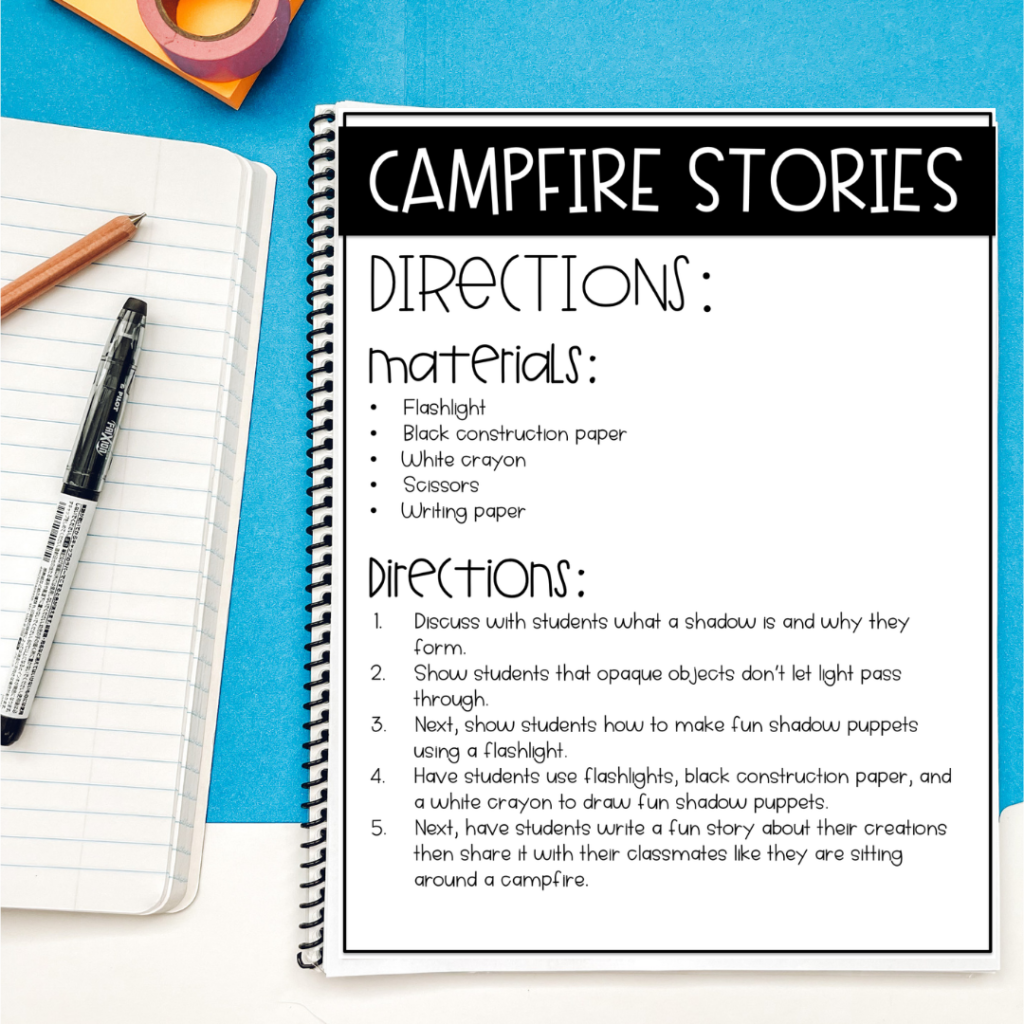
The last topic we cover in our light unit is shadows. I teach students that opaque objects make shadows when a light is shone on them. Students will play with flashlights and also make shadows practicing what they have learned. Once they have had time to explore how to make shadows, I have them pretend they are sitting around a campfire and tell stories using shadow puppets. How fun and engaging is that?!
What you’ll need:
- Flashlight
- Black construction paper
- White crayon
- Scissors
- Writing paper
Getting Started:
- Discuss with students what a shadow is and why they form.
- Show students that opaque objects don’t let light pass through.
- Next, show students how to make fun shadow puppets using a flashlight.
- Then, have students use flashlights, black construction paper, and a white crayon to draw fun shadow puppets.
- Next, have students write a fun story about their creations and then share it with their classmates like they are sitting around a campfire.
Make a Science Journal When Teaching Light Energy Lessons to 2nd Grade!
In summary, teaching light to 2nd grade can be a ton of fun with the right activities and hands-on experiments. Keep track of what your students learn by making a notebook where they can record their thoughts and ideas. If you are looking for more science interactive notebook ideas, then check out my Science Interactive Year Long Bundle.
Light Energy Lessons: Experiments and Interactive Notebook
The activities in this post are from my Light Energy Interactive Notebook pack. For even more forms of energy experiments, check out my bundle on sound, light, and heat activities.
Also, be sure to save this post by pinning this to your Pinterest account. That way, teaching light to 2nd grade is a breeze.
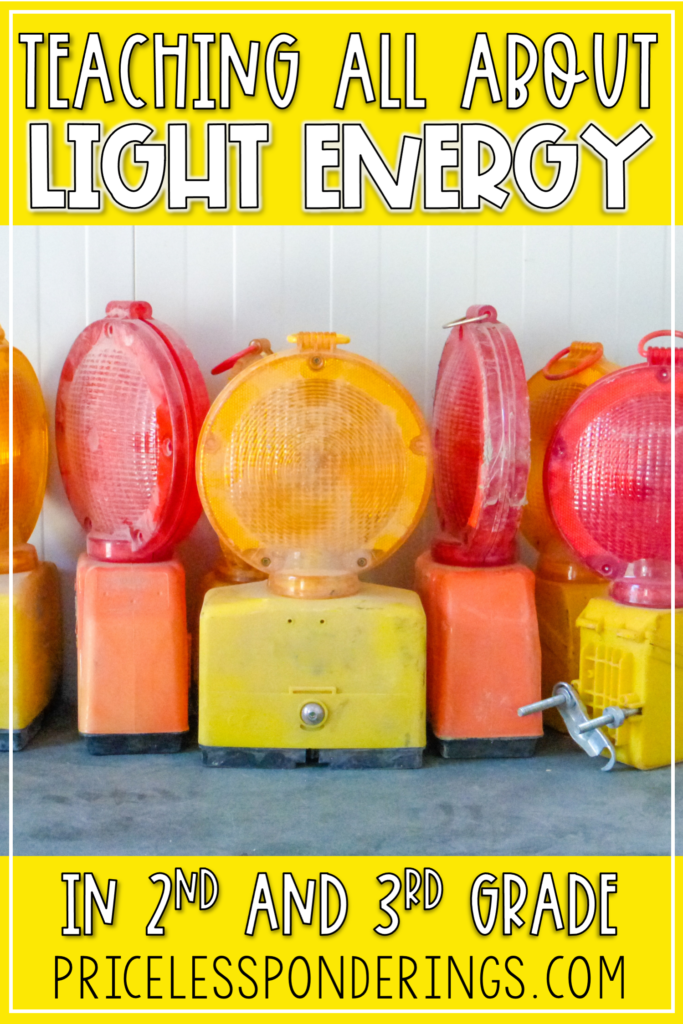
For More Science Activities, Visit These Posts!
FORMS OF ENERGY ACTIVITIES FOR KIDS
SOUND ENERGY: SCIENCE ACTIVITIES FOR KIDS
TIPS FOR TEACHING LIVING VS. NONLIVING THINGS



